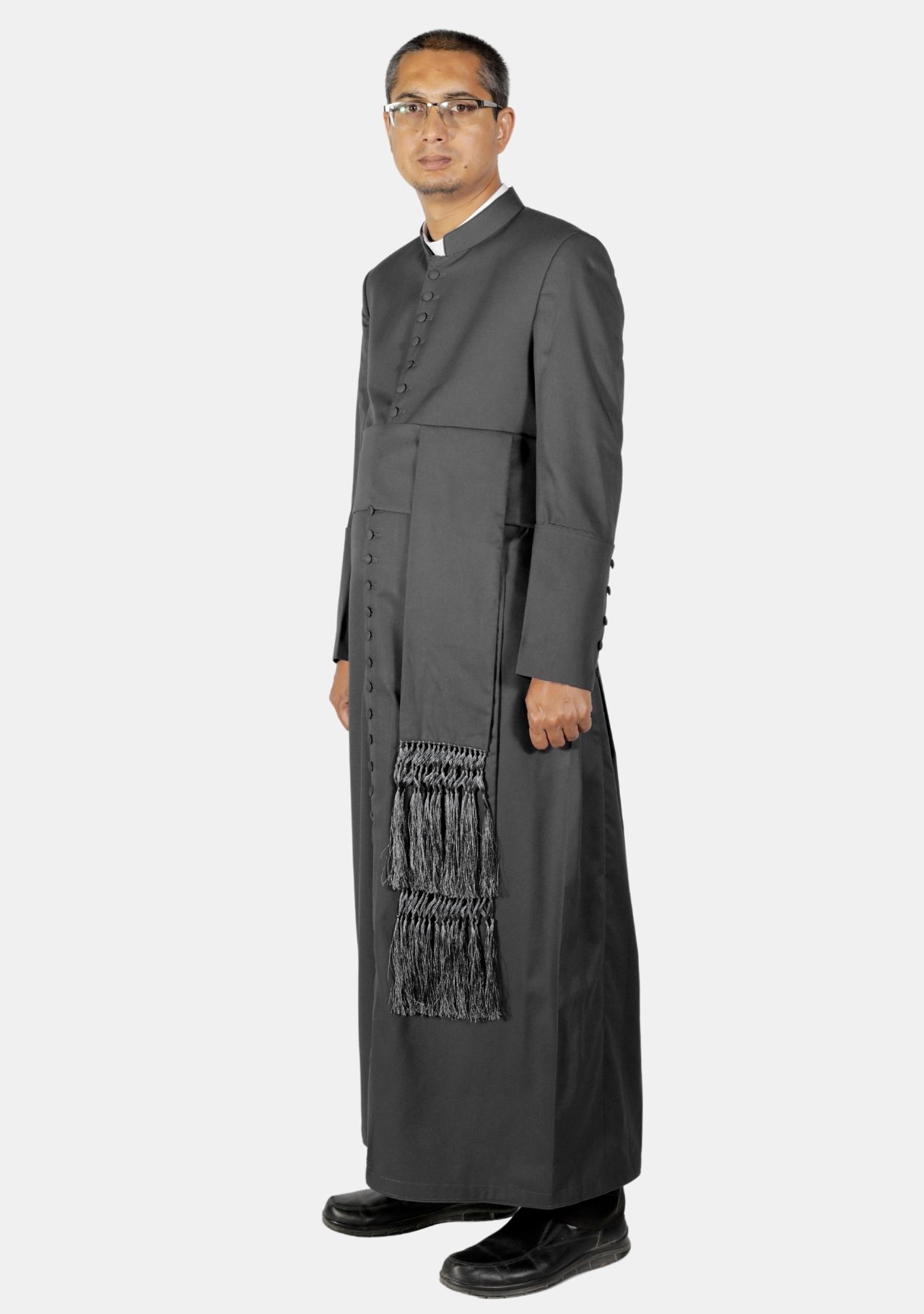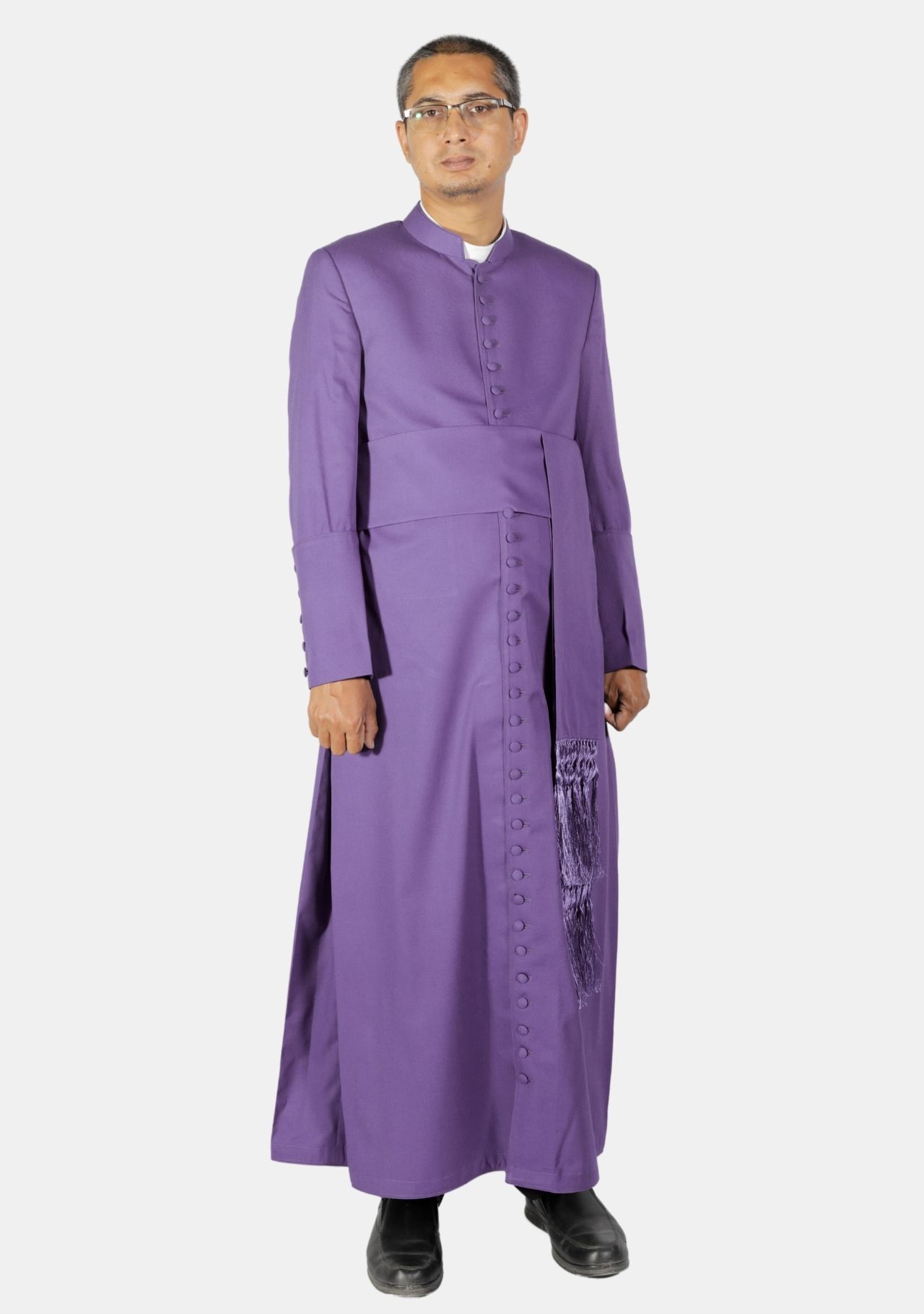Introduction:
In the world of religious ceremonies and worship, the attire worn by clergy members holds significant importance. The priest's outfit, also known as vestments, is not merely a set of garments but a symbol of sacred tradition and spiritual significance. Let's delve into the various elements of a Priest's Outfit and explore the deeper meanings behind each piece.

Alb: The White Robe of Purity
The foundation of a Priest's Attire is the alb, a long, white robe that symbolises purity and the baptismal garment. This ankle-length tunic is worn by priests of various Christian denominations during liturgical services. Its white colour serves as a visual representation of the priest's commitment to a life of holiness and devotion to God.
Cincture: The Belt of Continence
Securing the alb around the priest's waist is the cincture, a cord or belt. This simple yet essential accessory represents self-discipline and continence. Tied in a knot, the cincture serves as a reminder of the priest's vow of celibacy and dedication to a life of spiritual service.
Stole: A Symbol of Priestly Authority
The stole is a long, narrow strip of fabric worn around the neck and hanging down the front. The colour of the stole varies depending on the liturgical season or the specific ceremony. It symbolises the yoke of Christ and is a visible sign of the priest's authority and responsibility within the community. During certain sacraments, such as confession or anointing of the sick, the stole takes on a unique significance.SacredElegance: Your sanctuary for divine attire. Clergy Wear Shop that blends tradition and style, embodying sacred grace for every occasion.

Chasuble: The Liturgical Outer Garment
The chasuble is a sleeveless outer vestment worn over the alb and stole. It comes in various colours corresponding to the liturgical calendar, each colour representing a different season or celebration. The chasuble adds a layer of symbolism, signifying the priest's role as a mediator between the divine and the congregation.
Mitre: The Crown of Authority
Reserved for bishops, the mitre is a ceremonial headdress that resembles a pointed hat with two distinctive peaks. Symbolising authority, the mitre is a visual representation of the bishop's role as a teacher, ruler, and shepherd of the flock. The intricate designs and embellishments often carry deeper theological meanings.
Conclusion:
The priest's outfit is more than a mere uniform; it is a tapestry of symbols woven together to convey spiritual truths and centuries-old traditions. Each element of the vestments tells a story, connecting the priest to the sacred history of their faith and emphasising their commitment to a life of service, purity, and divine authority. As worshippers witness the priest donning these sacred threads, they are reminded of the rich tapestry of their faith and the sacred journey they share with their spiritual leaders.
Frequently Asked Questions(FAQs)
What is a priest outfit called?
A priest's outfit is called vestments, which includes garments such as alb, stole, chasuble, cincture, and more.
What can priests wear?
Priests can wear various liturgical vestments during religious ceremonies, including the alb, stole, chasuble, and other symbolic garments.
How do priests get dressed?
Priests typically get dressed by putting on the alb first, securing it with a cincture, then adding the stole and chasuble for specific ceremonies.
What do priests wear every day?
In their daily lives, priests often wear clerical clothing, which may include a black shirt with a white collar, known as a clerical collar or Roman collar.
Why do priests wear special clothing?
Priests wear special clothing, such as vestments, to symbolise their sacred role, show humility, and convey their commitment to serving in a spiritual capacity.
Can priests wear suits?
While priests often wear special attire for religious ceremonies, they may wear suits in non-liturgical settings or during their daily activities, especially in more casual or formal situations.

No comments yet